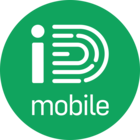You can connect your tablet, laptop, handheld games console or anything else to it, even when you're out and about.
To do this, you need your own MiFi device – it’s a wireless, credit-card sized piece of kit that can easily fit into your pocket. Then just pop a DataOnly SIM into it, and you’ll create a localised WiFi signal that can be shared by as many as
10 internet-enabled devices.
How many people can connect to MiFi at once?
Wireless MiFi lets you connect up to 10 people at once. It's a great option if you're with work colleagues, fellow students or friends who need to stay connected for any reason - work, study or play.
To find out more, check out iD Mobile’s MiFi information webpage. It includes details of the products and plans currently available.
If you’ve got a comment or question on MiFi, feel free to post it below.


